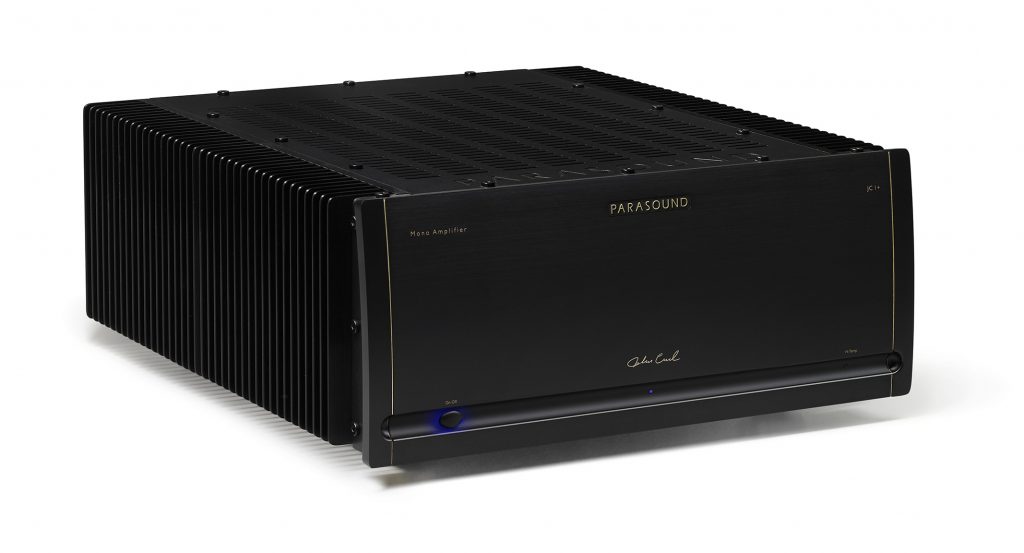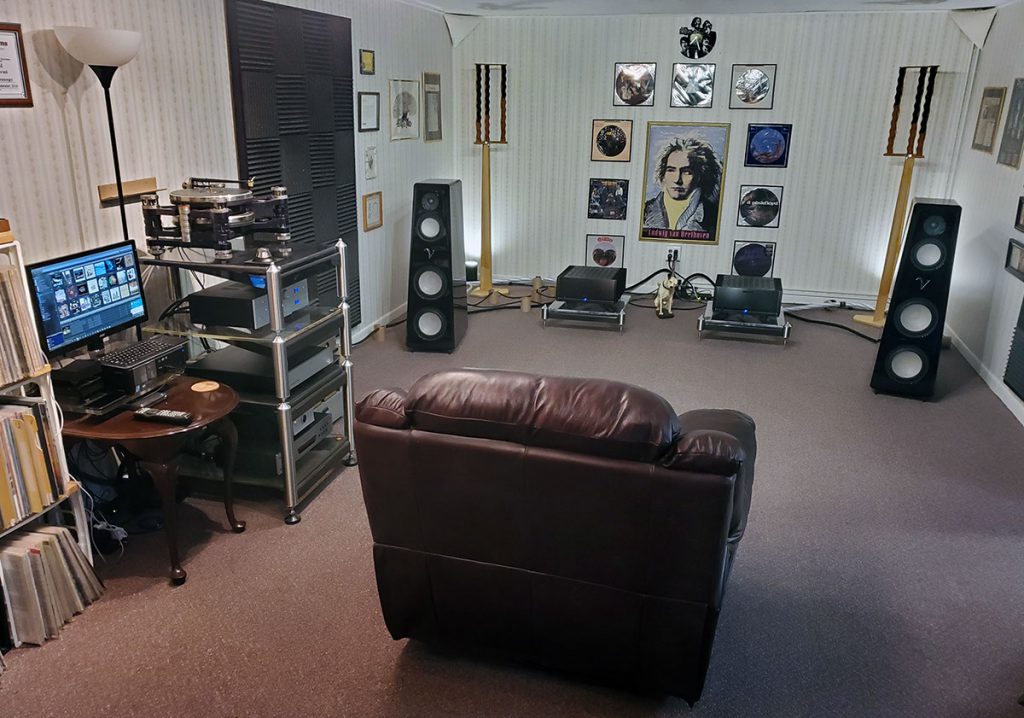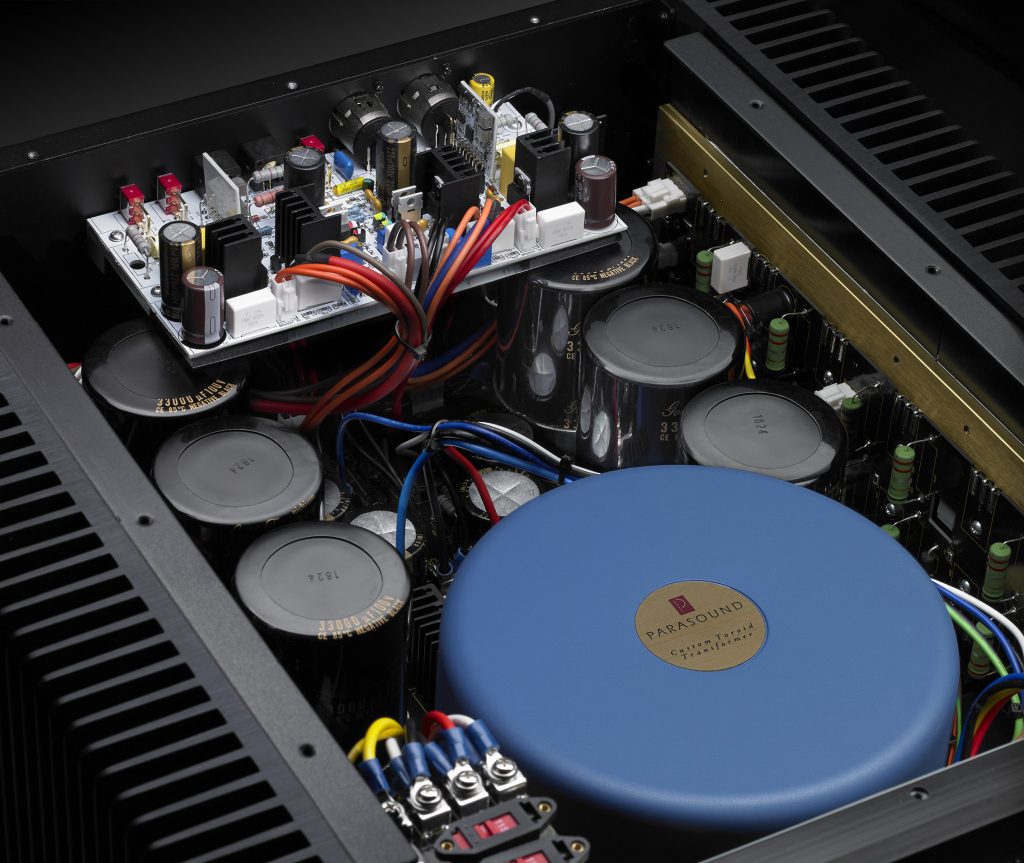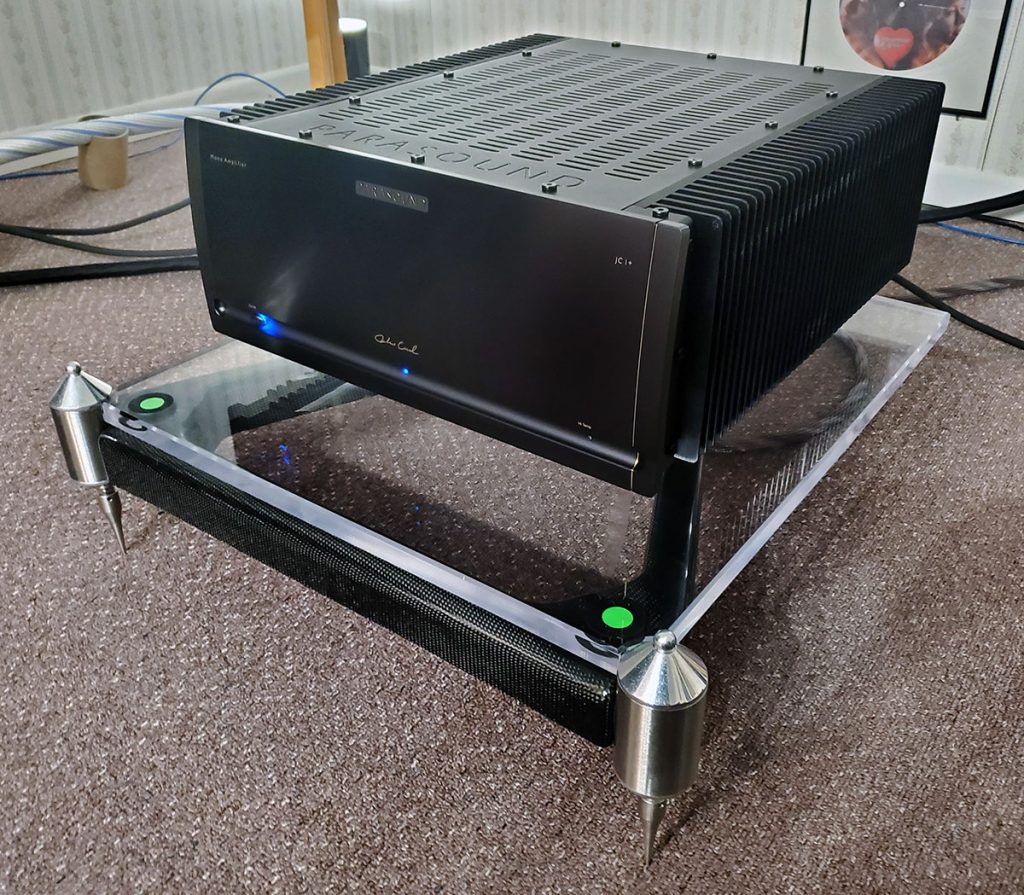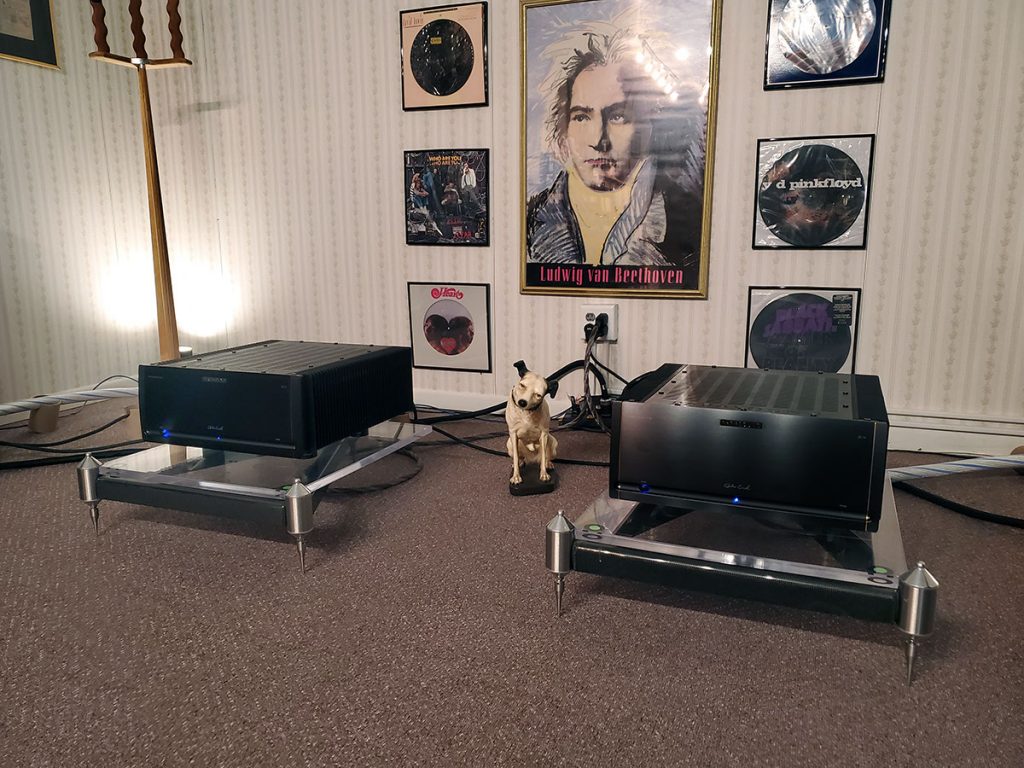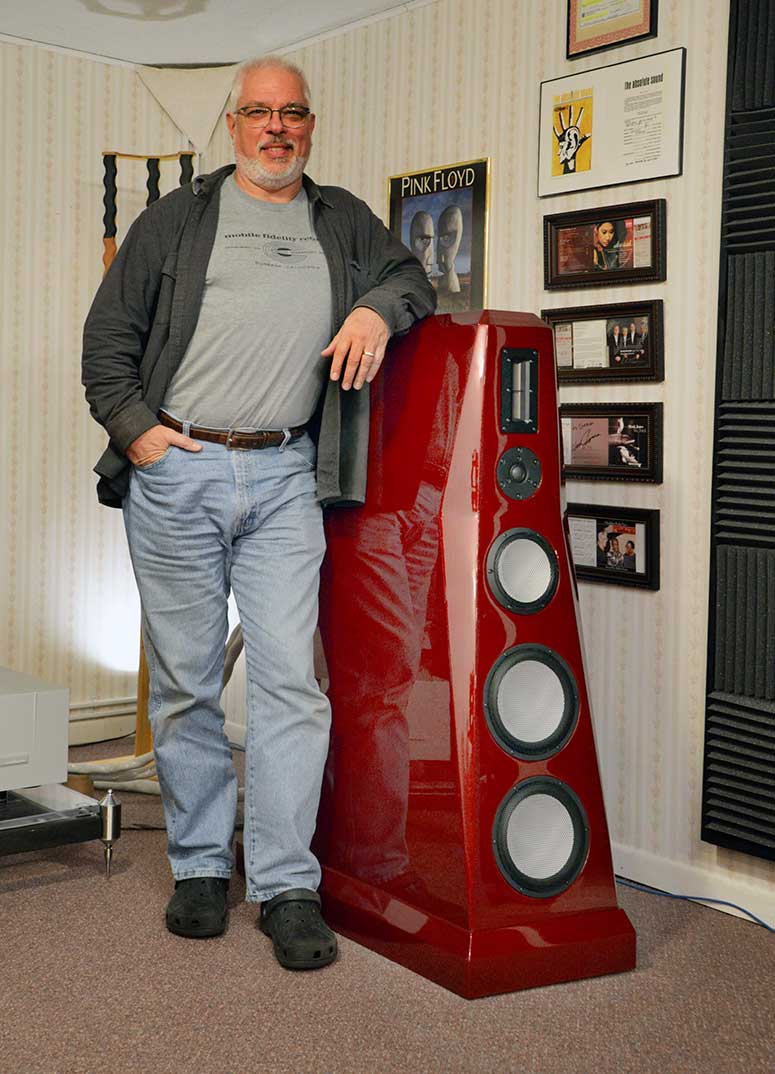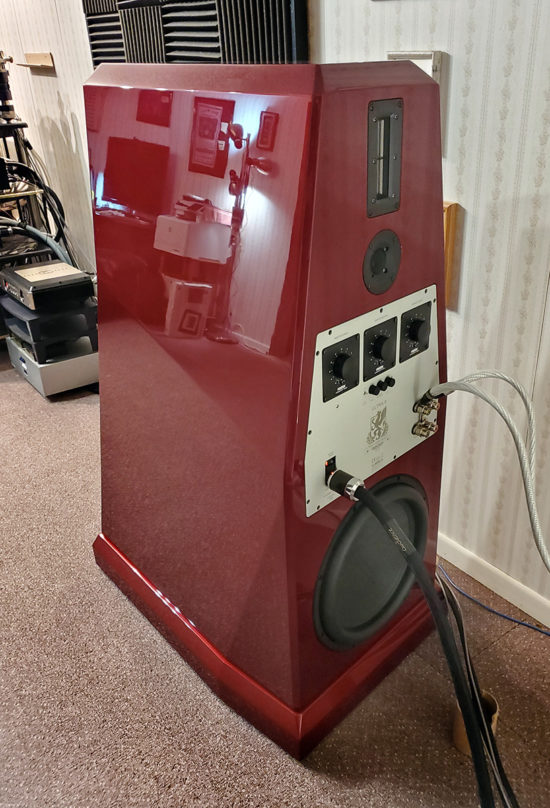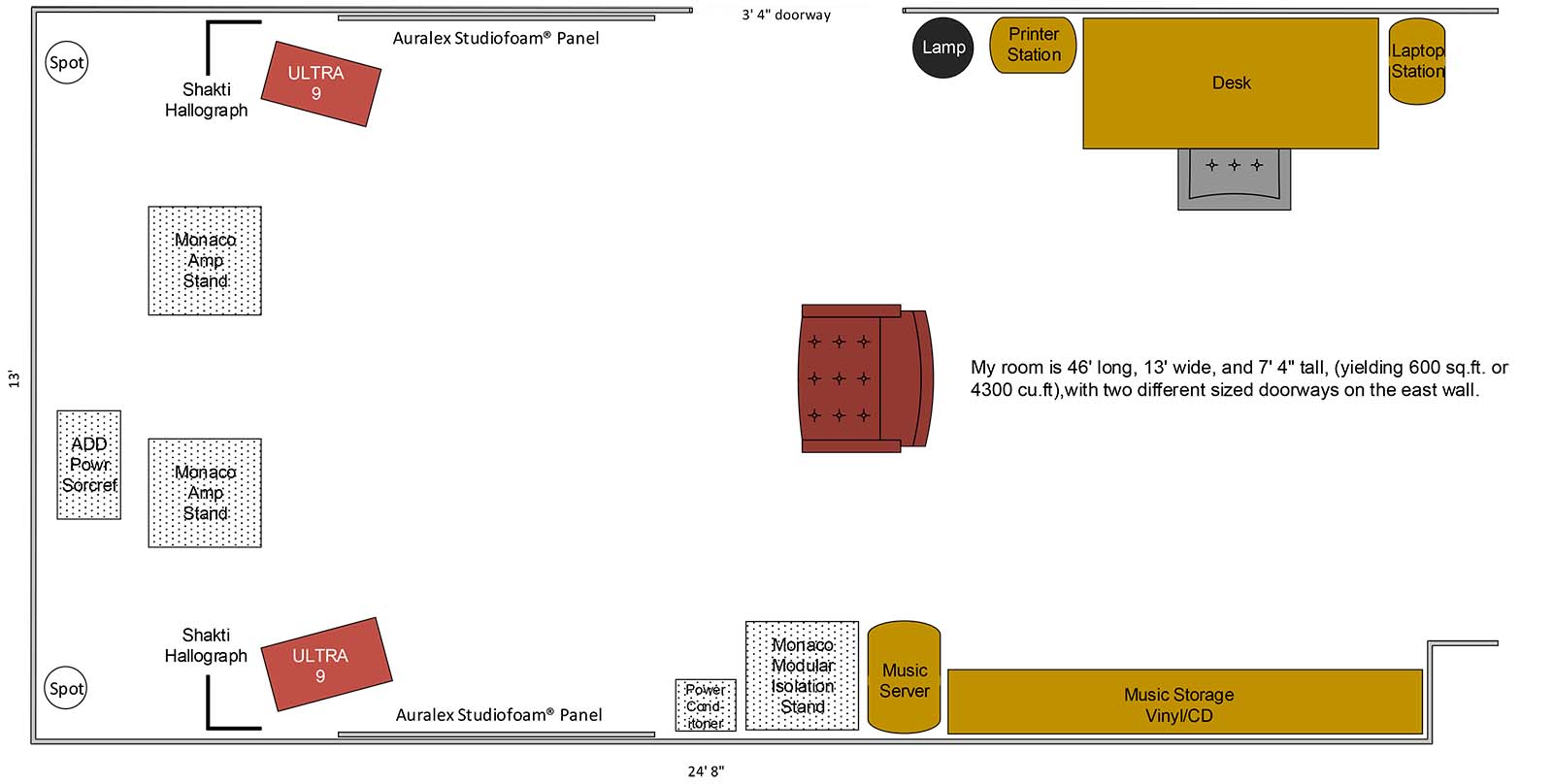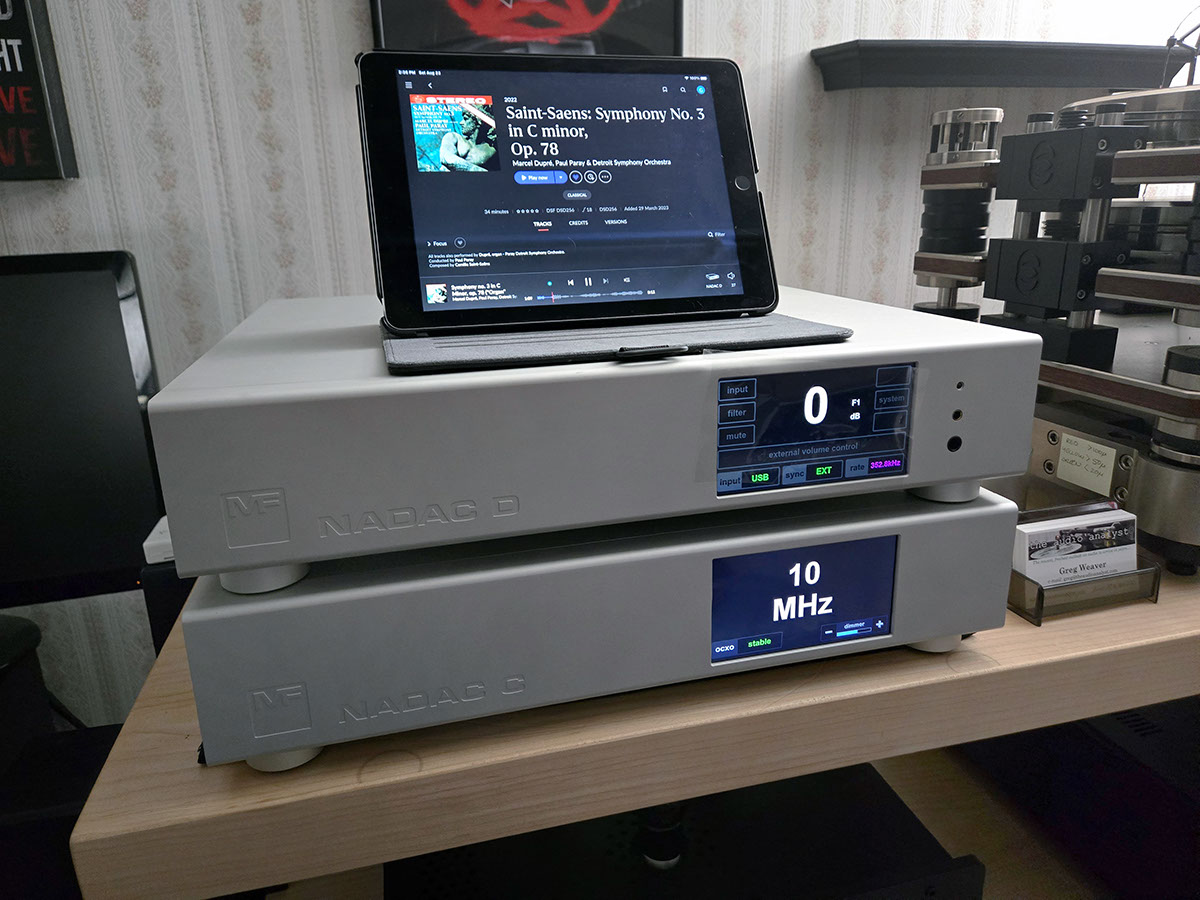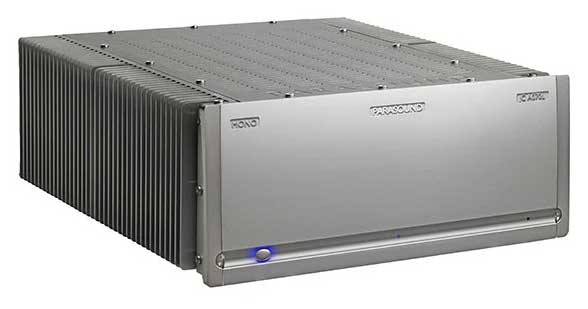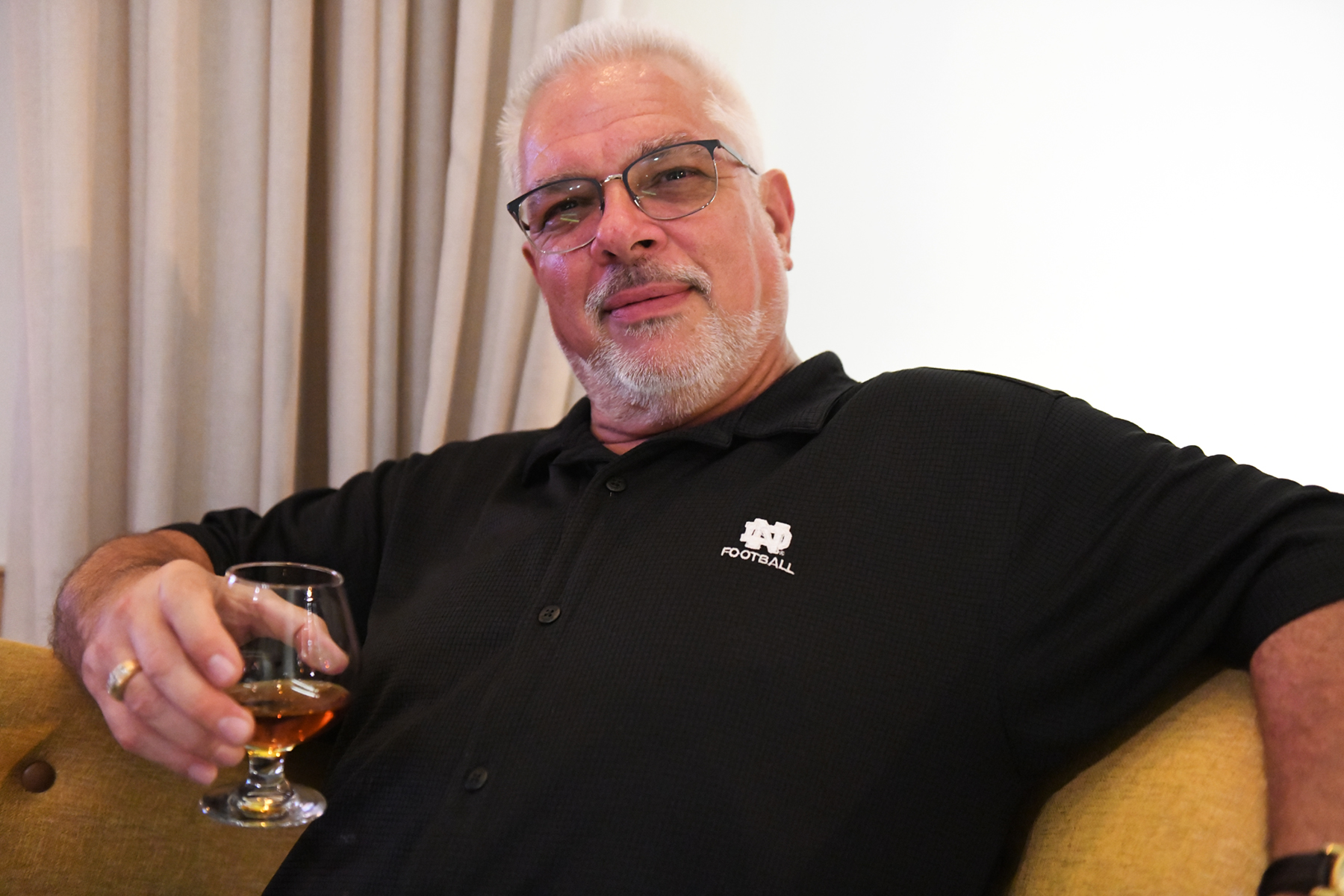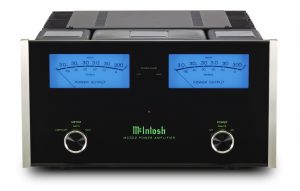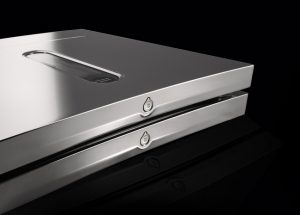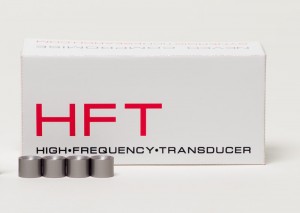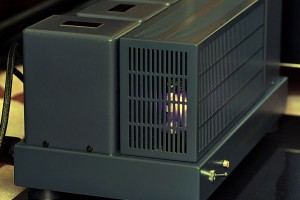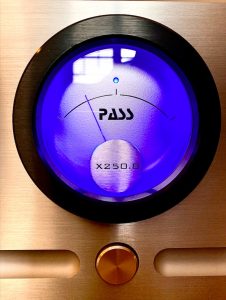From The Beginning…
If you are unfamiliar with the name John Curl, you clearly haven't been around the audio industry long. As one of the most accomplished and recognized solid-state electronics designers of all-time, his work has given us of some of the most ground-breaking and performance-setting components in our industry's history.
Starting to distinguish himself in the late 1960s, he developed the four-quadrant symmetry balanced bridge amplifier for the Ampex Corporation. By 1973, the year I graduated High School, the founder of another soon-to-be-renowned company, Mark Levinson Audio Systems, commissioned him to build a new preamplifier, the JC-2, which caught the attention of a lot of ears when it hit the market in 1975. Considered to be one of the foundational products of the American high-end renaissance, it introduced a circuit topology that many will point to as the basis for virtually all modern amplifiers. He soon followed with the Mark Levinson JC-1 DC Cartridge Preamplifier, a product that not only heralded John Curl as a leading solid-state low-level amplification engineer, but that many have suggested delineates the start of a revolution in the extreme high end of consumer audio.
However, as exceptional as this pairing initially proved to be, it wasn't long into the first Reagan administration when underlying issues became problematic at the Levinson company. By this time, John was profoundly disappointed to see that components bearing his name were being released in iterations that fell considerably short of the full measure of their capabilities. In John's eyes, his seminal designs were being needlessly and deliberately shortchanged by restrictive budgetary choices made only to save money, with no consideration as to how that scrimping compromised their performance. To add insult to injury, John was not being paid what he had originally been promised. So as well as feeling slighted as a designer, he began to feel as though he was being cheated as well.
Embarrassed and highly annoyed by the way he was being swindled, both monetarily as well as by the deliberate penny-pinching compromises that diminished the capabilities of his designs at Levinson, John set out on his own launching the fittingly named Vendetta Research. Merriam-Webster defines a vendetta as, 1.) a blood feud, or 2.) an often prolonged series of retaliatory, vengeful, or hostile acts, or exchange of such acts. John saw this as the perfect opportunity to show what his designs could really deliver, as well as making a definitive statement as to how he felt he had been treated at Mark Levinson Audio Systems.
His first product, the TCP-1 phase-coherent electronic crossover, never really received the attention it deserved. I suspect that it was both too far ahead of its time, and not well enough understood or promoted.
But the audio world was changed forever with the 1988 introduction of the Vendetta Research SCP-2 phono stage. The SCP-2 was a four-box solid-state phono stage, with separate left and right channel audio circuits, and separate left and right channel power supplies. A kit was available to rackmount the chassis pair side-by-side, and it notably eschewed the engraved faceplates and lavish casework common to many of its competitors' products from that era. This groundbreaking phono stage had no buttons, controls, lights, or switches—not even so much as a power-indicator lamp!
But its unrivaled sound quality and low noise shocked LP listeners of that era, including yours truly! And even with a price of $1895, making it the most expensive solid-state phonostage ever brought to market at that time, what many consider to be JC's magnum opus was still highly sought out. It was such a milestone product that even today you'll rarely see one show up on the used market.
He has done consulting work for more high-end companies than you can shake a stick at. I don't want to get too far off into the weeds here; you can readily research John's extensive and incredible career. I will round out this point by mentioning that he designed and built the electronics for both Mobile Fidelity's SuperMaster, and David Wilson's UltraMaster, tape recorders, head amps for SOTA, Michaelson & Austin (TVA), the Dennesen JC-80 preamplifier, as well as creating loads of custom electronic gear for the Grateful Dead. But to the point here, while Richard Schram, President and CEO of Parasound Products, Inc, established the Parasound brand in September 1981, John Curl has been working on Parasound product design since 1989.
Over the years, John has worked closely with other conscientious designers, notably Carl Thompson and Bob Crump, who routinely worked together and were known collectively as CTC Builders (Curl, Thompson, Crump). What would come to be known as the Parasound Halo JC 1 amplifier arose out of modifications that CTC Builders performed on the Parasound HCA-3500 between 1999 and 2001. In their pursuit to achieve the best possible electrical design, layout, and to use the best parts, John designed the circuits, Carl handled board layout and design (having done the circuit boards for the Vendetta Research phono stage, and the Parasound JC 1, JC 2 BP, JC 3+ and JC 3 Jr), while Bob selected the actual constituent parts, hookup wire, connectors, and terminals that populated Carl's boards, voicing the final result.
While I have never met Carl, he was revered for his ability to envision and then execute remarkably effective circuit layout, with an enviable ability to develop densely packed boards offering both amazing symmetry and minimal signal path length and interaction. His layouts were as much art as engineering. I had the pleasure of getting to know Bob through our annual visits at CES. He did business as TG Audio Labs (reputedly standing for "Tough Gristle"), and was revered almost as a legend for both his ability to clearly hear and identify the sonic differences between materials and brands of audio parts as well as for his own TG branded cables and products. The resultant original Parasound Halo JC 1 was a collaborative design of the highest order.
While Richard Schram notes in a print interview from May of 2015 that the original Parasound Halo JC-1 amplifier was officially introduced to the world in March of 2003, I have photos of the late Bob Crump from the January 2002 CES using four of them, driving a pair of Wisdom Audio M-50 loudspeakers. Richard has since shared with me that because they felt that they had so much riding on the introduction of the JC 1, that they had built a number of pre-production units, identical to subsequent serial production models, to be able to vet it against as wide a range of demanding state-of-the-art loudspeakers as was reasonable.
As good as that sounded, it was the system he showed at the following CES, in January of 2003, that really left its impression on me. That year, the system Bob was showing incorporated the CTC Blowtorch preamplifier ($12,500), Bob's own TG Audio Labs Digital System prototypes ($12,000) for source material, his own TG wiring throughout, and the very open, relaxed, and luminous, six-and-a-half-foot tall, SoundLab Millennium-1's ($16,240). That system made my Best of CES show report that year.
The Plus in the 1+
The original JC 1 was based on a complementary differential J-FET input stage followed by two stages of selected push-pull MOSFETs, ultimately driving nine pairs of the most powerful complementary bipolar power transistors that were available in the early 2000s. This result was a spectacular amplifier that yielded 400 watts into 8 ohms, 800 watts into 4 ohms, and 1200 watts into 2 ohms, with no observable compromise! One of its principal strengths was that it was biased to deliver its first 25 watts of output in class A! This allowed for most of its output envelope, apart from the demand for large bass transients for example, to be contained within the class A operational mode, giving it a remarkably sweet and engaging sonic signature.
It should be noted that at its introduction, the JC 1s were $3000 each. By the time the last one rolled off the Parasound assembly line in 2018, after more than a decade-and-a-half of production, they were still remarkably priced–at just $4495 each. Today's JC 1+ carries a retail of $8495 each, a near doubling in price since the discontinuation just two years ago. What could possibly make it worth such an asking price?
Today's JC 1+ offers 450 watts into 8 ohms, 850 watts into 4 ohms, and 1300 watts into 2 ohms! It employees 22,400 uF of input stage power supply filter capacitance, independent of the main output stage power supply, which has also been increased by half again, from 132,000 uF to 198,000 uF, using six 33,000 uF Nichicon Gold Tune filter capacitors. A shielded toroidal power transformer with premium H18 grade core has upped transformer capacity from 1.9 kVa to 2.1 kVa, with peak current elevated by about one-third, from 135 A to 180 A. And while the original JC 1 used nine pair of output transistors, the 1+ now employs 24 beta-matched 15A, 230V, Sanken 60 MHz bipolar output transistors in twelve compliments. Further, it shares its predecessor's desirable trait of delivering its first 25 watts in pure class A, with full power rated all the way down to 2Hz!
New to the Plus iteration is the use of FR-408 circuit board material, an R-core power transformer on the input stages, and extensively augmented input board shielding, all implemented to improve high-frequency performance and overall signal integrity. The output / power supply circuit board copper traces are doubled in thickness, and all internal audio signal path connectors are gold-plated. It features a newly designed cascode circuit driver stage that integrates with Bybee Music Rails™, active high-frequency noise filters from Bybee Technologies. It employs Harris hyper-fast, soft-recovery bridge diode rectifiers, REL & Nichicon Muse capacitors, as well as DC servo and relay protection circuits.
Also new is a user-selectable gain switch ( 23dB or 29dB of gain), looping Neutrik XLR outputs for easier bi-amping, updated auto turn on circuits with 3.5mm 12V trigger jacks, custom CHK Infinium speaker binding posts, and a front panel power indicator LED.
All these changes have the 1+ "dressing out" at 83 pounds compared to the 64 pounds of the original. While I've chosen to highlight what I see as the most significant updates to the original JC 1 design, you may see a detailed listing at the Parasound website link posted at the conclusion of this article.
Burning Down The House
Though I had inquired of Parasound's Director of Sales, Phil Jackson, back in late 2018 as to my doing a review whenever the reimagined JC 1 might make its way back into the Parasound roster, when the January 16, 2020 Press Release landed in my inbox, I immediately requested a listen! Amusingly enough, when that request was granted, I was told that, just as Henry Ford had offered the Model T in 1909, I could have my JC 1+ in any color I wanted, so long as it was black! However, production models are now available in a silver finish as well.
Long known for its enveloping rich sound, I'll admit to being more than merely interested to see just what this updated iteration of such a revered and celebrated amplifier could do. Fresh from their packing boxes and replacing my reference Audionet MAX monoblocks, even though they exhibited an overall slightly cooler tone and came down just a tad on the analytical side of natural, they did offer surprisingly good texture and spatial presentation. While I didn't spend any considerable time with them over their first 400-odd-hours of run-in, what I heard in passing was remarkable and had really piqued my interests.
As compellingly powerful, fast, and extended as the new JC 1+ recreated bass, and in particular, the lowest two octaves, from 80 Hz down into the low teens, with my Von Schweikert Audio VR-55 Aktives, if I hadn't known what amplifiers I was using, I could easily have been convinced I was listening to considerably costlier monoblocks. In my system, they served up the lowest registers with a remarkably refined level of control, ample detail, and unusually genuine pitch definition. Their ability to convey bass weight and slam, to render concussive impact while remaining extremely detailed and articulate was exceptional. In this regard, they best or clearly equal many other more costly contenders, such as the Pass Labs XA160.8 or Constellation Inspiration 1.0 series of amplifiers…and the Halo JC 1+ monos are roughly two-thirds of their price.
As surprisingly exceptional and rewarding as its bass performance proved to be, particularly in this class, midrange performance was stunningly good as well. Midrange, while clearly not as utterly compelling as is rendered by today's benchmark-setting amplifiers such as the VAC Statement 450i iQ Integrated ($150,000) or the Statement 452iQ Musicblocs ($150,000/pr.), or the Audionet Heisenberg's ($105,000/pr.), its midrange simply blusters with life while maintaining its refined detail, with remarkably full body and richness of harmonic bloom.
Fundamental tonality and color from guitar, piano, violin, the human voice, et. al., is rendered with unquestionable realism, rife with texture, and presented in realistic size and dimension. Its uncanny ability to recreate engagingly smooth, fluid, articulate, and expressive midrange gives the JC 1+ a disarming sense of live-ness, even with recordings I long have considered to be mediocre.
Treble is very well focused and detailed, nearly effortlessly smooth, and in all my time with them, never even hinting at any etched sterility. Listening to triangles buried deeply within complex and layered classical recordings, or ride cymbals with jazz or blues combos, you are treated to generous detail, stirring attack, and an abundance of ambient decay, recording permitting. And while treble is delicately detailed, pleasantly resolute, open, and teeming with good sparkle and shimmer, it is somewhat wanting of the full measure of effortlessness and extension that today's absolute best (read, much more expensive) amplifiers deliver. And while falling somewhat short of accomplishing that sense of graceful effortlessness, of unfettered extension that allows the listener to subliminally perceive the air around the instruments, they still do an ample job regenerating trailing ambiance and decay.
The overall tonal balance of the new Halo JC 1+ is exceptionally evenhanded, offering vibrant, lifelike tone color and full, dense textures. Their ability to render such authentic timbre, blistering attack, instrumental bloom and body, and convincing weight, combined with delivering such a high degree of musical clarity with unfettered ease won me over in short order. The first word that comes to mind while they were in play driving my VSA VR-55 Aktives was natural.
Their effect while powering my reference system was one of affording an overall sense of relaxation, of a warm invitation to listen, allowing me to drop all presumptive concerns about listening to a complex reconstruction engine, a conglomeration of electro-mechanical devices, and simply bask in the musical gestalt of the recordings I played. The actuality was that, unlike many other amplifiers in this class, I was never drawn to, or even tempted to focus or speculate about any individual sonic attribute, and speaks volumes as to the success of their design and execution. I found myself simply given over to the power and persuasiveness of the musical message. These new monoblocks simply do not call any undue attention to themselves with any comissive or omissive behavior.
Given their best-in-class ability to resolve low-level spatial cues and their markedly coherent voice, it will come as no surprise that they present a degree of soundstage layering, of image specificity, size, and shape, which is extraordinary at this price. Again, while not as precise in this regard as today's finest offerings, particularly in depth, absolute image sizing, and their interrelationships, instrumental locations are dimensionally solid and stable and image sizes are unquestionably realistic, neither bloated nor diminished. Their ability to render the sense of air and space around and between highly individualized voices throughout a complex and congested stage is remarkable. With recordings up to the challenge, the stage is compellingly wide, deep, and, most notably, of the appropriate height.
Working Class Hero
Even though at its original price of $6000 for a stereo pair, the JC 1 could never be considered a "budget" product in the truest sense of the word. While they were an undeniably "affordable" and exceptional option for someone looking for a powerful, performance amplifier, they had long occupied that "gateway" or "tweener" position between considerably more affordable options from well-respected manufactures like Rotel (just acquired by Sumiko on May 5th, 2020) or NAD, and those much more costly entrants pushing state-of-the-art performance. At this new price point, they have made a serious and, to my ears, smart choice. With the new Halo JC 1+, Parasound has announced their clear intent to throw their hat into the ring and tackle head-on that step-up strata of amplifiers, joining that rarified class that truly offers a clear "cut above" level of performance. It more than comfortably competes with, and actually bests, many contenders who have long enjoyed favored status in that lionized class of more refined and inspired amplifier designs. Quite honestly, if I were some of those competitors, I'd be more than a little concerned! The JC 1+ is a stirring achievement, and not just "for the price," that simply demands your consideration.
I've not heard any other monoblock entrant at or even close to this price that is able to recreate so many aspects of music with a more authentic voice. These amps are magnificent performers in nearly every regard. Honestly, I cannot think of a pair of monoblocks that offer a view anywhere near this close to the top of the heap for anywhere near their asking price. I can tell you that if I were shopping for a pair of monoblocks under $25,000, the Parasound Halo JC 1+ would be my first choice. Go give these new over-achievers a listen and be prepared to be bowled over by what you will hear. Most enthusiastically recommended.
Specifications
- 450 x1 watts @ 8 Ω, 850 x1 watts @ 4 Ω, 1300 x1 watts @ 2 Ω
- 2 Hz - 120 kHz, +0/-2 dB, 20 Hz - 20 kHz, +0/-0.25 dB Total Harmonic Distortion (THD)
- 0.15% THD, RMS continuous power,
- Unmeasurable Damping Factor
- 122 dB, IHF A-weighted, bias set to Low
- 113 dB, Unweighted, bias set to Low
- 29 dB (Gain switch set to normal), 23 dB (Gain switch set to low)
Dimensions
- Height: 7-3/4" (197 mm)
- Width: 29-1/2" (750 mm)
- Depth: 20" (508 mm)
- Weight: 83 lb. (37.6 kg)
- 4 rack space chassis with rear carry handles, rack mount hardware is included
Halo JC 1+ Mono Amplifier
Retail: $7494
Parasound
2250 McKinnon Avenue
San Francisco, CA 94124
415.397.7100
https://parasound.com/jc1+.php




